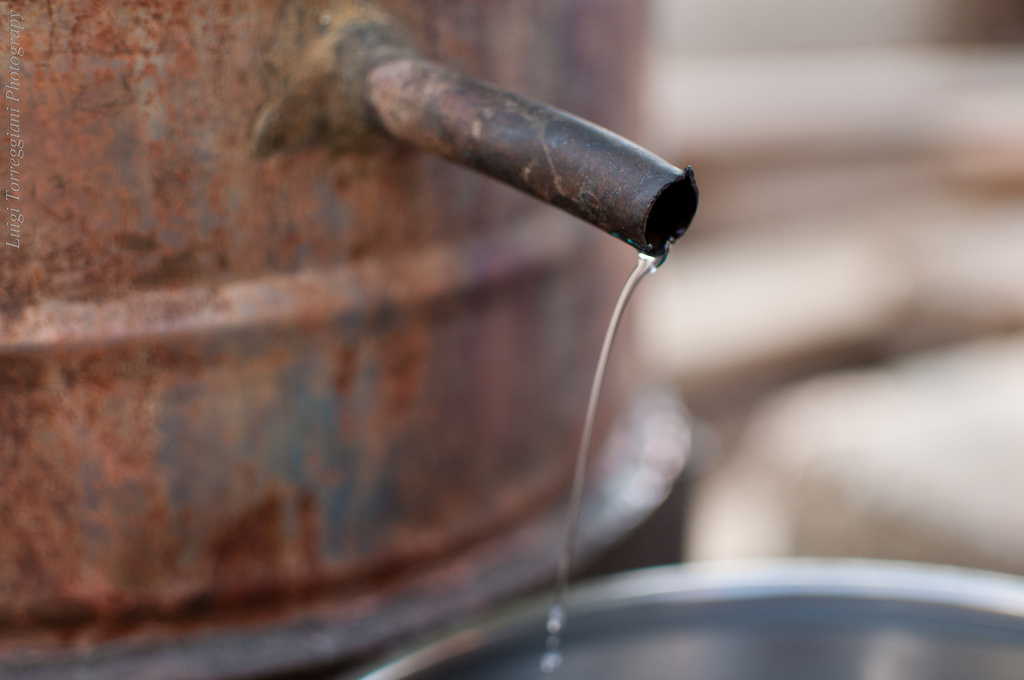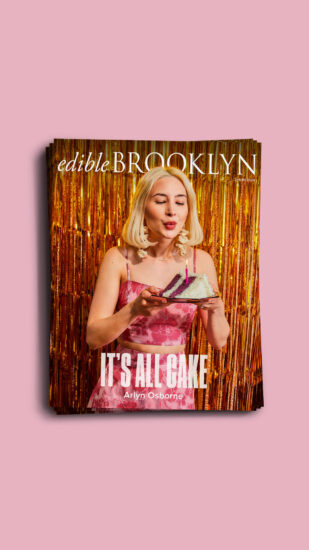It was love at first distillate.
Van Brunt Stillhouse owner Daric Schlesselman has become known and well-regarded for his small-small batch, handcrafted Due North rum and line of whiskies, but via a happy accident of the neighborhood kind, the Daily Show editor-turned-distiller found he has much passion for grapes as he does for grains and other spirit sources. So, how did a nice northern Italian digestif wind up the ward of a Brooklyn-based distiller? We decided to ask.
Edible Brooklyn: How’d you first get into making grappa?
Daric Schlesselman: I was walking by Red Hook Winery and they were pressing grapes, and were like, “Hey, you should make grappa!” I don’t think I’d even tasted grappa before, but I took some grape skins — there were three batches, all different grape varieties: Cab Franc, Pinot Noir and some Merlot. At the time, I was distilling mostly brandies and gin in my five gallon still.
EB: How much did you make?
DS: When I say I made a little grappa, I literally made a little grappa. I’d take 20 gallons of grape skins and run them through the still. And I was instantly in love. It’s such a fun, instant process and had such wonderful earthy, grape flavors. It’s not all about all the alcohol — there are really interesting things going on there. I was captivated! It’s a fun process.
EB: What was it like and since you didn’t really know a lot about grappa at that point, how did you figure out whether you were on the right track?
DS: I loved mine instantly and, obviously, I knew what mine tasted like. So every time I went out to a restaurant, I would order grappa and I would buy it at liquor stores. I started diving into the whole category head first. I had a lot of others that I found less captivating. Once we got the distillery up and running, I started doing it on a larger scare. I actually chose my still for the distillery with specs in configuration with a still that would work.
EB: You can’t use just any still? How come?
DS: You have to be able to load and empty with grapes. Not all stills have a big enough drain to get grapes out of it. You’re literally filling it full of solids and most are destined for distilled liquid. I made two season’s worth on the still we have now — it’s a nominal 470 liters, but with grappa that’s actually a relevant number. We can put in 470 liters of grapes [in the still] every time.
EB: Do you make it every year now?
DS: For the 2013 harvest, I made no grappa. But it’s not the fault of the winemaker — the grapes were fine. The process created grappa that was less flavorful than I would like. It tasted fine, but lacked the robust varietal flavor that I have grown to like and our customers have grown to expect.
EB: Is it different to work with red versus white grapes?
DS: Yes, definitely. In 2012, we bought a bunch of white grapes from from Lieb Cellars [in Long Island] and we did a ferment here of those grapes. The tricky part about making grappa from white grapes is if you use white, you have a bunch of grapes with residual sugar so you have to ferment those grapes. We have 500 gallon fermenter capable of accommodating the grapes, so that’s the limit of our ability to do white wine parietals because you have to take those grapes the moment their pressed.
EB: So, if there’s something else running the still you’ve got a pile of grapes skins and seeds on your hands with no where to go?
DS: If you wait a day and they start to develop oxidative flavors. With red grape varietals, there’s a certain preservative affect from then alcohol [and from the phenolic compounds that live in the skins and seeds]. Red wine grapes don’t generally press off skins until they’ve already gone through fermentation. So with reds, we’re getting grape skins with residual alcohol; with white grapes, it’s just sugar. Oxidation plays a part in red wine, too, but have leeway in terms of time.
Photo credit: Flickr / torremountain




